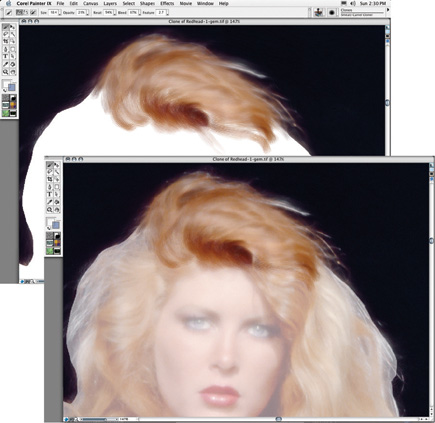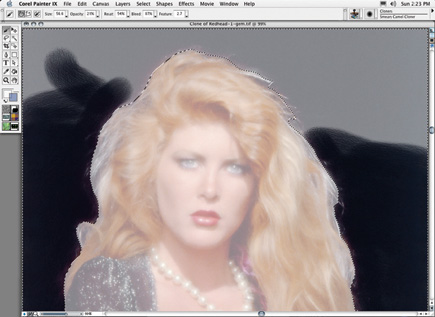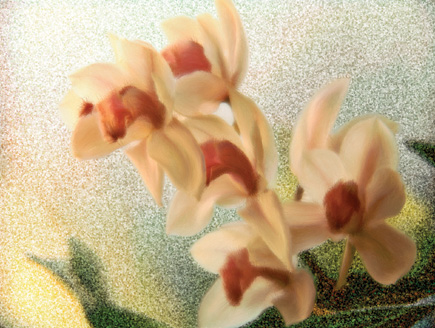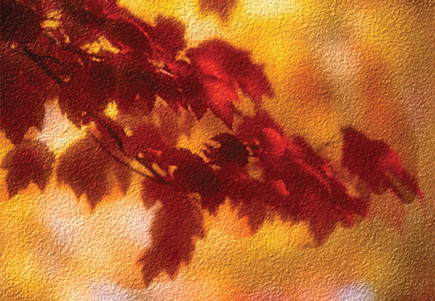Corel’s Painter IX; An Improved Application To Recreate Photographs Page 2
 |
|
|
Many of the other and very large selection of brushes in Painter IX can be converted to use as a Clone brush by first selecting the brush and then, in the Color Palette, manually selecting a color. You can also choose to add color from the Color Palette and then brush this color in. In fact, if you use Painter IX with a black and white photograph in RGB mode format, you can create an oil-paint color rendition to digitally simulate the look of traditional oil-colored photographs.
 |
|
|
Another dimension can be added by selecting one of the Papers. This simulates
a natural medium upon which the "paint" is applied to a substrate,
like French Water Color paper. The painting actions interact with the paper
texture as the image information is applied, and it simulates how oil paint
really looks texturally when applied to canvas. In addition, the effect can
be modified with the KPT filters included with Painter IX or any other standard
plug-in filter you may have. Finally, with any color work you do in Painter
IX, once set up, the application fully supports either ICM or Colorsync color
management, so the color you see on screen you will be able to reproduce with
the same quality you would expect with another color-managed application
like Photoshop.
 |
|
|
Conclusion And Recommendation
My exploration of Corel's Painter IX barely scratched the surface, yet
I was able to recreate several photographs with great satisfaction. And with
Painter IX now so much easier to use, I am sure I will return to it whenever
I have some free time and need to be playful, and I'll be able to get
right into it and learn even more. I find it particularly satisfying and encouraging
because I have always wanted to draw and paint but was never able to master
the eye/hand skills well enough to do more than embarrass myself. With Painter
IX, working from an underlying photograph was just enough of a guide, a helping
hand to encourage me and keep my interest high. One small satisfaction led to
another, and another, and now I have the confidence and the curiosity to come
back as soon as I can to find out what more I can do with this now friendly
way to make new images from old photo files.
 |
|
|
Corel's Painter IX supports both PC Windows and Apple Macintosh users at a moderate cost; it is currently available from the Corel website at $369 or $199 for an upgrade. You can save some money if you also need a pen/tablet by getting a bundle of both, including a Wacom Graphire or Intuos combo package from Corel. For more information about Corel's Painter IX, contact Corel Corporation, 1600 Carling Ave., Ottawa, Ontario, Canada K1Z 8R7; (800) 772-6735, (613) 728-8200; www.corel.com.
- Log in or register to post comments

































